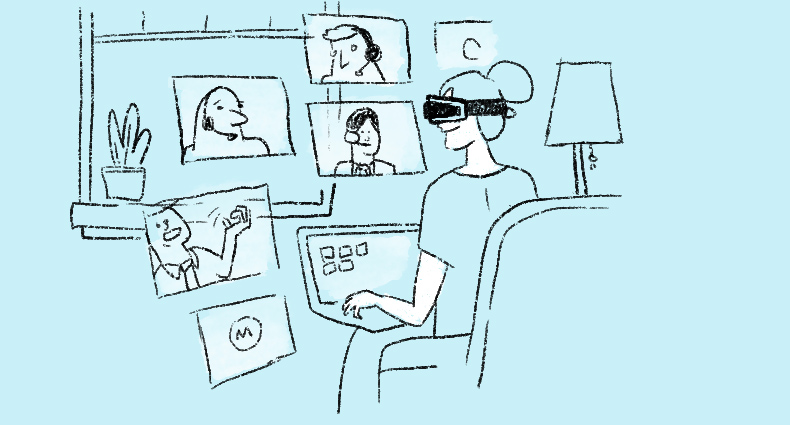The new office concept should be focused on enhancing people’s work, simplifying workflows, but at the same time creating a work space focused on collaborators, taking into account the needs of the new generations who no longer want work be a “burden”, but rather be a possibility to find a purpose and connect with society.
For this reason, companies must have a more integrating vision of the human being, which considers other planes beyond work to achieve the much sought after “work happiness” where an integration between the work environment and the personal is generated and the limits that separate our work and personal life blur to merge into a single life.
This applies to the place that one considers to be the office, some will continue to attend completely modified workspaces of what we know today and on appropriate occasions, others will have their virtual and portable office.
For this, virtual reality has the potential to change the way we work. In the future, you will be able to work productively anywhere using only wearable devices and immersive head-mounted displays. Virtual reality has the potential to achieve this, allowing users to create work environments of their choice and freeing themselves from the limitations of the physical world, such as tight spaces or noisy environments.
On the other hand, it will be necessary to rethink physical spaces, this not only applies to companies, but also to homes. COVID-19 has shown us how our certainties can disappear in the blink of an eye. People aspire to a more harmonious and balanced life, increasing work from home. Many of the fears about remote working had to be quickly overcome with COVID-19 and now work policies and the needs of huge, often underutilized locations must be rethought. The polycentric office will be the new standard for most of us. We can work from home, in the Headquarter or in third places such as: coworking spaces, cafeterias, libraries or satellite offices, according to what is most appropriate and convenient. This will bring multiple advantages: fewer trips, lower carbon footprint, greater well-being, better life / work balance and lower costs for companies and employees along with more agile and productive teams. Today companies are at the mercy of very volatile markets, this makes the “Office as a Service” a very convenient model for these times, giving the possibility of growing and decreasing easily. ‘Flexibility’, is the name of the song.
In the same way, many people realized that homes were not so well prepared to become offices overnight. Being able to work productively from home depends on factors such as environmental quality, technology and people’s behavior.
The office of the future, then, is really a complex issue that ranges from technology and completely virtual spaces to the adaptation of homes, incorporating spaces for work to the reduction of fixed spaces of companies, adaptation of environments that are more integrated spaces and similar to coworking with private environments for shared use, hiring of adequate satellite spaces at different points and ease for collaborators to use them according to their convenience and the implementation of the “Office as a Service”.


